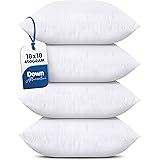Do you ever wish gardening felt a little less daunting and a lot more rewarding? The video above showcases 23 genius ideas to transform your garden, offering quick and clever hacks that can make a real difference for your plants. Whether you’re a seasoned green thumb or just starting out, these easy gardening tips can simplify complex tasks and boost your success. From mastering seed germination to nurturing specific plants, cultivating a thriving garden doesn’t have to be complicated. Let’s delve deeper into these brilliant strategies, expanding on why they work and how you can implement them for a lush, vibrant outdoor space.
Unlocking the Secrets of Seed Germination
One of the most crucial steps in successful gardening is ensuring your seeds get a strong start. The video highlights several excellent techniques for optimal seed germination, turning what can sometimes feel like a lottery into a more predictable outcome. Many seeds possess hard outer coats that prevent water absorption, acting as a natural dormancy mechanism. To overcome this, gently cutting between seeds, a process known as scarification, can significantly aid in quicker germination. This subtle incision allows moisture to penetrate the seed, signaling it’s time to sprout.
Conversely, some seeds benefit from softening rather than scarification. The video suggests waiting approximately 4 days for seeds to soften, which is a form of pre-soaking. This method is particularly effective for larger seeds with slightly softer coats. Soaking helps to hydrate the embryo and wash away germination-inhibiting chemicals, preparing the seed for rapid growth once planted. After soaking, planting these hydrated seeds directly into warm, moist soil gives them an immediate head start.
Another key factor for successful sprouting is providing the right environment, specifically heat and water. Most seeds prefer a consistent, warm temperature to germinate, as this mimics natural spring conditions. Using a heat mat under seed trays can dramatically improve germination rates, especially for heat-loving plants. Maintaining consistent moisture without waterlogging the soil is equally vital; seeds need continuous access to water to break dormancy and begin cellular division. However, ensure adequate drainage to prevent rot and fungal issues, which can quickly derail your efforts.
Ensuring Seed Viability and Proper Storage
Not all seeds are created equal, and knowing how to identify viable seeds can save you time and effort. The video mentions keeping “good seeds at the bottom.” This refers to the simple yet effective “float test.” To perform this, place your seeds in a glass of water. Viable seeds, which are dense and healthy, will sink to the bottom. Non-viable seeds, often hollow or damaged, will float to the top. Discard the floating seeds and proceed with planting the ones that sank, as they have a much higher chance of successful germination.
Proper storage is paramount for maintaining seed viability over time. After harvesting or acquiring new seeds, it’s crucial to let them dry for 5-7 days before storage. This prevents mold and mildew, which can quickly ruin an entire batch. Store dried seeds in a cool, dark, and dry place in airtight containers or paper envelopes. Keeping them in the refrigerator or freezer can extend their shelf life significantly, preserving their genetic potential for future planting seasons. However, always ensure they are completely dry before sealing them away.
Understanding the natural timing of germination is also beneficial. While some seeds can germinate from a week to two months, depending on the species, the video correctly points out that in the spring, seeds often grow better and faster. This is due to rising soil temperatures, increasing daylight hours, and typically consistent moisture. Additionally, while seeds can germinate with any lighting, young sprouts absolutely need good lighting. Once the seedling emerges, immediate access to bright, indirect light is crucial to prevent leggy growth and encourage strong, healthy development. Consider using grow lights if natural light is insufficient.
Expert Plant Care: Nurturing Your Garden’s Stars
Once your seeds have successfully germinated, the journey continues with providing optimal care tailored to each plant’s needs. The video offers specific guidance for popular garden staples, helping them reach their full potential. Implementing these easy gardening tips can lead to abundant harvests and beautiful foliage throughout the growing season.
Specific Needs for Thriving Vegetables and Fruits
For instance, watermelons are notorious sun-worshippers, and the video emphasizes that they “grow better at high temperatures in sunny areas.” These delicious fruits require at least 6-8 hours of direct sunlight daily and thrive in consistently warm soil. To achieve extra sweetness and size, ensure your watermelon plants have plenty of space to sprawl and are watered deeply and regularly, especially when fruits are developing. A well-drained, rich soil amended with compost will also contribute to their vigorous growth and juicy yields.
Similarly, cucumbers are incredibly thirsty plants. The transcript notes, “during growth cucumbers need a lot of water.” Consistent moisture is key to preventing bitter fruits and encouraging continuous production. Aim for about 1 inch of water per week, either from rainfall or irrigation, and increase during hot, dry spells. Mulching around cucumber plants helps retain soil moisture and suppress weeds, giving your plants an edge. Providing a trellis or support system not only saves space but also keeps the fruits clean and improves air circulation, reducing disease risk.
Pineapples, though seemingly exotic, can be grown at home with the right conditions. The video specifies “the best conditions for pineapple growth 68-77°F.” As tropical plants, they thrive in warm, humid environments and require well-drained soil. Starting a pineapple plant from a store-bought fruit top is a popular DIY project. Simply twist off the leafy crown, remove some lower leaves, and allow it to dry for a few days before planting in a pot. Keep it in a warm, bright spot, and remember that patience is a virtue, as it can take a year or more for fruit to develop.
Pumpkins are another rewarding crop, particularly when given the right nutrients. The tip that “the pumpkin grows bigger and sweeter in fertilized soil” highlights the importance of rich, fertile ground. Pumpkins are heavy feeders, meaning they require a significant amount of nutrients to produce those impressive gourds. Amending your soil with plenty of compost or well-rotted manure before planting, and then consistently fertilizing throughout the growing season, will ensure your pumpkins have all the sustenance they need to grow large and flavorful. Adequate sunlight and consistent moisture are also vital for these autumn favorites.
General Planting and Early Care
When it comes to transplanting young plants, extreme care is necessary. The video advises to “carefully plant in the ground without damaging the root.” The roots are the plant’s lifeline, absorbing water and nutrients. Any damage can set back growth or even lead to plant death. Always handle seedlings by their leaves, not their stems, and gently tease apart any circling roots before placing them into their new home. Water thoroughly after transplanting to help settle the soil and reduce transplant shock.
Consistent watering and monitoring are fundamental for overall plant health. You should “regularly water and spray the plant” as needed, especially during dry periods. While regular watering targets the roots, spraying foliage can help with humidity-loving plants and can sometimes deter pests. However, it’s crucial to water in the morning to allow leaves to dry before nightfall, reducing the risk of fungal diseases. Observing your plants daily for signs of stress, pests, or disease allows for early intervention, keeping your garden robust.
Finally, young shoots often have specific environmental needs that differ from mature plants. The video notes that “young shoots need shade and wet ground. Plant in cool weather.” Delicate new growth can be scorched by intense direct sunlight, so providing some shade during the hottest parts of the day can be beneficial. Additionally, maintaining consistently moist, but not waterlogged, soil is critical for their undeveloped root systems. Planting during cooler weather, such as early spring or late fall, minimizes stress and allows young plants to establish themselves before facing extreme temperatures.
Smart Watering and Soil Enhancement Strategies
Effective watering techniques and nutrient-rich soil are foundational to a thriving garden. These easy gardening tips focus on maintaining ideal moisture levels and boosting soil fertility, leading to healthier plants and more abundant yields. Understanding how to manage water and soil will empower you to create a more resilient and productive garden.
Innovative Watering Methods
For plants in pots or containers, the video suggests to “put in a sunny place and moisten” while for others, “keep out of direct sunlight and water regularly.” This highlights the varied needs plants have for sun and water. However, consistent moisture is universally important. One common challenge for gardeners is keeping plants hydrated when away from home. The video offers an “easy way to water your plants while you’re away,” hinting at DIY solutions. Simple methods include creating a wicking system using cotton rope submerged in a water reservoir, which slowly draws water to the plant’s soil. Another popular hack is using inverted plastic bottles with small holes poked in the cap, slowly dripping water into the soil. These passive irrigation systems ensure your plants don’t dry out, even if you’re gone for several days.
For larger garden beds, installing a drip irrigation system can be a game-changer. Drip lines deliver water directly to the plant’s root zone, minimizing evaporation and water waste. This method provides consistent moisture, which is especially beneficial for plants like cucumbers that need a lot of water. Furthermore, mulching around plants with organic materials like wood chips or straw helps retain soil moisture, suppress weeds, and regulate soil temperature. This means less frequent watering is needed, saving both time and water resources.
Boosting Soil Health with Natural Fertilizers
Beyond watering, healthy soil is the backbone of a successful garden. The video highlights a simple yet powerful natural fertilizer: “an eggshell is a natural fertilizer.” Eggshells are an excellent source of calcium carbonate, which is vital for plant cell wall development and preventing common issues like blossom end rot in tomatoes and peppers. To use them, rinse and thoroughly dry eggshells, then crush them into a fine powder. You can mix this powder directly into the soil when planting or sprinkle it around established plants. The calcium will slowly release into the soil, providing a long-term nutrient boost.
However, eggshells are just one component of a holistic approach to soil health. As seen with pumpkins benefiting from “fertilized soil,” enriching your soil with organic matter is crucial for overall plant vitality. Incorporating compost, well-rotted manure, or worm castings improves soil structure, aeration, drainage, and water retention. These organic amendments also introduce beneficial microorganisms that help break down nutrients, making them more available to your plants. A healthy soil ecosystem translates directly into healthier, more productive plants, reducing the need for synthetic fertilizers.
Creative DIY Solutions and Herb Cultivation
Gardening doesn’t always require expensive tools or elaborate setups. Many of the video’s easy gardening tips revolve around creative DIY solutions and simple approaches to cultivating popular herbs. These practical hacks make gardening more accessible and sustainable, allowing you to get resourceful with everyday items and enjoy the freshest flavors from your own backyard.
Repurposing and Crafting for Your Garden
The concept of “DIY plant pots” is a fantastic example of repurposing. Instead of buying new containers, you can transform items like plastic soda bottles, milk jugs, or even old tires into functional and often aesthetically pleasing planters. Plastic bottles can be cut in half, with the top inverted into the bottom to create self-watering systems. Newspaper can be folded into biodegradable seedling pots that can be planted directly into the ground, reducing transplant shock. These creative solutions not only save money but also reduce waste, contributing to a more sustainable gardening practice. Remember to always add drainage holes to any DIY pot to prevent waterlogging, which is detrimental to most plants.
Beyond pots, DIY principles can extend to many other aspects of gardening. Creating simple trellises from old branches or scrap wood can support climbing plants like cucumbers and peas. Constructing raised beds from reclaimed lumber or cinder blocks improves drainage and soil quality, making gardening easier on your back. Even a homemade compost bin from pallets can turn kitchen scraps and yard waste into valuable soil amendments, closing the loop on nutrient recycling in your garden. The ingenuity of DIY gardening makes it a truly rewarding hobby.
Growing Your Own Flavorful Herbs
Finally, the video highlights the simple joy of growing your own herbs, mentioning “oregano, rosemary, basil.” These culinary staples are incredibly rewarding to cultivate, providing fresh flavor for your dishes right from your garden or windowsill. Oregano and rosemary are Mediterranean herbs that thrive in full sun and well-drained soil, tolerating drier conditions once established. They are relatively low-maintenance and can be grown in pots or directly in the ground, providing fragrant foliage year-round in many climates. Regular pruning encourages bushier growth and prevents them from becoming leggy.
Basil, on the other hand, is a tender annual that loves warmth and consistent moisture. It requires at least 6 hours of sun daily and rich, well-drained soil. Pinching off the top sets of leaves regularly not only provides fresh basil for your kitchen but also encourages the plant to branch out, producing more leaves. If you see flower stalks beginning to form, pinch them off immediately, as flowering can signal the end of the plant’s leafy production. Growing these easy gardening tips compliant herbs allows you to enjoy fresh, organic ingredients, enhancing both your culinary adventures and your connection to the garden.











